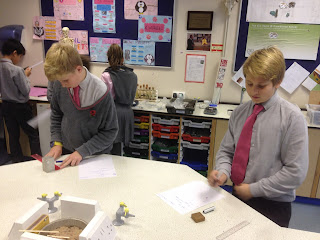Year 7 have just finished their exams and my set used the Carbon Cycle game to help learn in a kinaesthetic way. Just what you need after sitting in exam rooms for the last three days.
Starting off as carbondioxide in the atmosphere
You throw your dice to see what happens to you
First you get photosynthesised into a plant leaf
Then you might go up the food chain
Or get burnt, respired decomposed or fossilised
But eventually you will inevitably end up back in the atmosphere starting the cycle again





















































